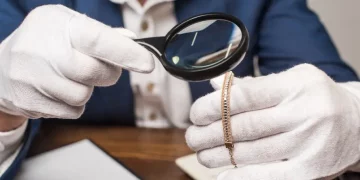In the world of collecting, knowledge is as valuable as the items themselves. For years, collectors have relied on expert guides to navigate the ever-shifting landscape of rare collectibles, providing them with insight into the value, authenticity, and historical significance of the items they pursue. Yet, it’s not just the collectors who are tapping into this expertise. Insurance companies, often thought of as behind-the-scenes entities in the financial world, have become some of the most prominent buyers of collectors’ guides, further blurring the line between niche hobbies and the broader world of finance.
This article delves into the reasons why insurance companies are increasingly investing in collectors’ guides. We’ll explore how they use this specialized knowledge, the importance of expert appraisals, and the growing trend of incorporating niche collectibles into insurance portfolios. Moreover, we’ll investigate how these practices are reshaping the insurance industry, particularly in the realm of high-value, rare, and collectible assets.
The Growing Value of Collectibles
Over the past few decades, collectibles have become more than just hobby items—they’ve transformed into high-value assets. Whether it’s rare art, vintage cars, sports memorabilia, or even comic books, the collectibles market has exploded. While these items were once regarded primarily as hobbies or investments, they are now increasingly seen as financial assets in their own right, comparable to stocks, bonds, and real estate in terms of potential growth and market demand.
This shift in perception is not just limited to collectors and enthusiasts. As the market for rare items has expanded, more and more industries are beginning to take notice, including the insurance sector. Insurers are looking for ways to cover high-value collectibles, but to do so, they need to ensure accurate appraisals and valuations.
Insurance Companies: A Growing Market for Collectibles
Insurance companies are in the business of risk management, and their ability to assess and evaluate the value of assets is critical to offering comprehensive coverage. With the rise in the value of collectibles, insurers need a reliable and accurate means of assessing these assets. This is where collectors’ guides come in. These guides, often produced by experts in specific collecting fields, provide invaluable information about the value, provenance, and authenticity of items in various categories, such as art, antiques, cars, and sports memorabilia.
Insurance companies understand the importance of specialized knowledge when it comes to valuing these items. For instance, a painting that was once worth $100,000 may be worth several million dollars today, depending on the artist, provenance, and condition of the piece. Accurate appraisals are essential not only for issuing policies but also for ensuring that a claim can be settled fairly in the event of loss or damage.
As such, insurance companies are increasingly turning to collectors’ guides to help them navigate the complexities of valuing rare items. These guides offer detailed information on trends, historical pricing, and detailed descriptions that can be used to verify the authenticity and value of an item. By purchasing these guides, insurance companies are able to protect themselves from over-insuring or under-insuring valuable collectibles.
The Role of Collectors’ Guides in Appraisals
At the heart of the insurance process for high-value collectibles is the appraisal. Appraisals are expert opinions on the value of an item, typically conducted by qualified professionals who have an in-depth understanding of the market for a particular category of collectibles. Appraisers rely on a combination of factors, including market trends, historical data, rarity, and condition, to determine the value of an asset.
Collectors’ guides play a pivotal role in these appraisals. They act as both a reference and a benchmark for appraisers, providing the detailed data and context needed to assess the value of an item. For example, in the world of vintage automobiles, guides that list average auction prices, as well as the rarity and condition of specific models, can help appraisers determine a fair value for a car. Without these guides, it would be much more difficult to assess the true market value of rare items.
Moreover, these guides often contain information on the provenance of items, helping appraisers to verify their authenticity. Provenance is crucial in the world of collectibles because it establishes an item’s history, including previous ownership, exhibition records, and, in some cases, its theft or recovery. For insurers, knowing an item’s provenance is essential in evaluating risk and determining an appropriate insurance policy.
How Insurance Companies Use the Information
Once insurance companies have access to collectors’ guides, they can apply the information in a number of ways. First, they can offer policies that are more accurately aligned with the true market value of an item. For example, an insurance policy for a rare vintage watch may be issued based on information found in a collector’s guide, which can help the insurer set the premium in line with the true market value.
Additionally, insurers may use these guides to determine the appropriate level of coverage in the event of a loss. A collector’s guide may show that a particular painting has increased significantly in value over the past few years. The insurer can then adjust the coverage to reflect the item’s current value, ensuring that the owner is adequately protected without paying for more coverage than they need.
Furthermore, insurance companies use these guides to help them manage risk. For example, they can identify high-value items that may need additional security measures or specialized care, particularly in cases where items are in storage or are regularly transported. This helps mitigate the risk of theft, damage, or loss.

Why Insurers Prefer Expert Knowledge
While some insurance policies, such as those for homeowners, may be straightforward, the insuring of rare and collectible items requires a higher level of expertise. Collectibles are not standardized like most assets; each item has its own unique characteristics that affect its value. An antique piece of furniture, a rare stamp, or a piece of vintage jewelry may have certain qualities that are not immediately apparent to the untrained eye.
This is where expert knowledge becomes crucial. By purchasing and consulting specialized collectors’ guides, insurance companies gain access to the expertise needed to accurately value items. This helps them avoid the risks associated with insuring items at inflated values or undervaluing them, both of which can have serious financial consequences.
Moreover, insurers are aware that collecting trends can shift over time. An item that is worth a significant amount today may lose value in the future, and vice versa. Collectors’ guides provide valuable insights into emerging trends in the market, helping insurance companies stay ahead of shifts in demand and adjust their policies accordingly.
Appraisal Secrets: Why Accuracy Matters
The accuracy of an appraisal is the cornerstone of a successful insurance policy. If an appraisal is too high, the insurance company risks over-insuring the item and collecting too much in premiums. If it is too low, the owner could be left underinsured in the event of a claim.
This is particularly important when dealing with high-value collectibles. For example, a piece of artwork may appreciate or depreciate in value dramatically in a short amount of time. Without accurate appraisals and up-to-date information, insurers could be caught off guard when trying to settle claims. Collectors’ guides provide a wealth of knowledge that can help insurers make informed decisions about coverage and claims.
One of the secrets of a good appraisal is understanding the nuances of the market. For example, rare limited-edition watches or comic books may fluctuate in value due to factors such as supply and demand, celebrity ownership, or historical significance. A collector’s guide can give insight into these trends, allowing insurers to fine-tune their policies and maintain their competitive edge in the marketplace.
The Bottom Line: A Smart Investment for Insurers
As the world of collectibles continues to grow and diversify, the role of insurance companies in protecting these assets becomes more important than ever. Collectors’ guides offer valuable knowledge and insights that insurers can use to provide accurate coverage, reduce risk, and ensure they are offering policies that reflect the true market value of rare items.
By acquiring these guides, insurance companies are not just protecting themselves—they are also offering their clients better, more reliable coverage. As the market for rare collectibles continues to expand, it’s clear that expert knowledge, in the form of collectors’ guides, will play an increasingly important role in the future of insurance.

















































